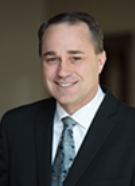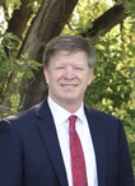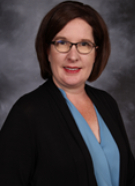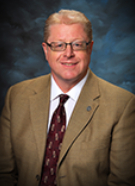IDAHO FALLS — The Idaho Falls superintendent and trustees are still reeling from an election that shut down their request for a record-breaking, $250-million bond.
In fact, much to their chagrin, not a single precinct reached the 66.67% approval needed to pass the measure, which would have funded construction of a new Idaho Falls High School, two new elementary schools, and extensive upgrades to Skyline High school.
At a board meeting Wednesday night, they brainstormed how to move forward and solve overcrowding issues – their Sunnyside Elementary is at 145% capacity, and Idaho Falls High is at 141% capacity — without new buildings.
“We’ve got to throw every noodle we have on the wall and see what sticks,” Paul Haacke, a board trustee, said.

Haacke also pushed for quick proposals to address the overcrowding problem: “I feel a lot of anxiety about the situation that I’m a trustee over and I don’t feel like we have a lot of time.”
The school board discussed changing elementary school boundaries to better reallocate students; going to split sessions to accommodate the excess of students; and putting a bond back on the ballot.
Changing elementary school boundaries: “A very small Band-aid on a severed limb”

Changing elementary boundaries would upset neighborhoods but has to be done, Superintendent Jim Shank said. Even if the bond had passed, the boundaries would have been redrawn.
The new boundaries should help to alleviate some overcrowding by placing students at schools that have more room. However, that means students might not get to attend the closest school to them, or even the next closest. They may be in for longer bus rides to find a school with a desk for them.
Board members said that Edgemont Elementary could take in some of the Sunnyside students. But the hard part is deciding which students get bused over there.
“We need to be careful because this will disrupt lives and neighborhoods, but we don’t have months and months and months to look at this,” Haacke said.
Trustee Larry Wilson said he would have no problem sending a child of his own to any elementary in the district. And if his child had to go to a neighboring school for the good of the district, so be it. But, he recognized that patrons get attached to their specific schools.
The board ultimately decided to look at suggested maps of boundary changes in December, then show those preliminary maps to the public in January by holding public meetings to get feedback. Then, the board will make a determination on boundaries and vote.
But even once boundaries are redrawn, it will only be a short-term solution to the bigger problem of overcrowding, trustees said.
“It’s a very small Band-aid on a severed limb,” Haacke said.
Split sessions: “A lot of unanticipated factors”
Imagine a school day where children started at 1 p.m. and finished at 7 p.m. That might become a reality for students in the Idaho Falls Schools District.
Trustees discussed at length the possibility of going to split sessions at their Wednesday meeting. It would involve half the students attending school from 7 a.m. to 1 p.m., and the other half from 1 p.m. to 7 p.m. The school would draw boundaries to determine which children would attend in the morning and which in the afternoon.
The switch would allow for all students to fit within existing schools, but Shank said it would cost at least $3.2 million for the additional teachers (about 56 new teachers) – and that’s not including benefits. And there’s the question of whether the district could find and hire enough teachers.
The teachers would also need a second shift of support staff available during those hours — paraprofessionals, tech support, administrators, etc.
The district would have to tighten its budget and consider a levy to afford the changes.
Haacke also suggested limiting electives, disallowing release time, and moving seminary classes to early morning or late sessions to make the schools’ schedules and use of teachers more efficient. Another option could be requiring students to take some online classes.
“It’s not a popular opinion, I’m only looking for discovery today,” he said. “These are things we have to consider.”
Then there are questions like how to fit in extracurricular activities (like athletic practices) around the schedule.
Shank acknowledged that there would be a lot to figure out if they moved toward split sessions.
“There are a lot of unanticipated factors I hadn’t considered,” he said.
But Haacke said the board should pursue split sessions, because it has a duty to resolve the overcrowding as soon as possible.

“We tried to address this through bonding and building (schools) … that could accommodate the current student load and growth. That failed but we still have the problems,” he said. “It’s too bad you can’t vote the problems away like you can solutions.”
Trustee Hillary Radcliffe said the Board was open to any other ideas the public might have.

“I would love it if we had something better than split sessions,” she said. “It’s not the best solution, but it’s the solution we sort of have.”
The district has cited projected growth as a concern, but this school year only grew by about 60 students (0.6% growth, putting enrollment at 10,116), according to preliminary enrollment numbers from the State Board of Education.
The bond issue may return to the ballot
Wilson said he wasn’t ready to give up on the bond.
And he reminded the board that the issues are beyond just overcrowding. He discussed some alarming photos from Skyline High School that showed sewage and electrical issues and leaky ceilings. The school is in dire need of a remodel, he said. And those issues wouldn’t be fixed with split sessions.
“It’s still my intention to keep pushing and driving to get those facilities,” he said.
Wilson quoted a recent post he’d seen online: “Put your bond signs in a safe spot because they’ll be coming out again.”
